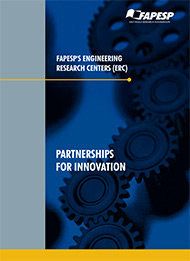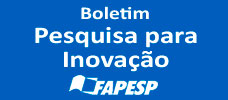About the Program

One of the current challenges to the progress of knowledge is the complexity of the problems addressed, often requiring longer periods than the two to five years of funding traditionally offered by FAPESP in the form of Regular Research Grants and Thematic Projects, or the typical projects supported by FAPESP’s Research Partnership for Technological Innovation Program (PITE).
Long-term funding and interdisciplinary approaches in many cases permit successful treatment of complex problems. For this reason FAPESP created its Special Program for Research, Innovation & Dissemination Centers (RIDCs), which supports long-term research projects. While a bold approach is called for to surmount these challenges, at the same time identifying the problems often requires partnering with companies or government entities that are directly linked to society.
FAPESP’s Engineering Research Center Program uses the successful model of the Special Program for RIDCs and associates it with PITE, in which a partner firm co-funds the research and is strongly motivated to participate in defining the focal themes to be investigated, to play an active role in research projects, and to use the results obtained by the Engineering Research Center concerned.
The most important feature of an Engineering Research Center’s action plan is the multiplicity of its missions. The primary mission that grounds its activities is to execute complex research projects at the knowledge frontier, oriented to problems and in pursuit of well-defined results that help form a world-class research center during its existence. In addition, the ERC’s internationally competitive core research team must develop effective means to transfer technology, promote education, and disseminate knowledge.
The complexity of executing an ERC’s action plan requires long-term funding and autonomy in the use of resources. This in turn requires a strong institutional link to the co-funding partner and suitable means for rigorous oversight of its activities.
In sum, an ERC supported by FAPESP must demonstrate:
a) World-class research at the knowledge frontier, fundamental or application-oriented, in both cases actively exploring opportunities to contribute to problem solving and to produce well-defined results with demonstrable potential to create a social impact and technological innovation;
b) Knowledge transfer to the partner firm and society including the business sector, the non-governmental sector and/or the public sector. Examples of valuable achievements along these lines include:
b.1 Projects executed in partnership with companies or governmental or non-governmental entities responsible for public policy. These projects may benefit from FAPESP’s Research Partnership for Technological Innovation Program (PITE) or its Public Policy Research Program (PPP).
b.2 Creation of startups to incorporate the results of research performed by the center into products or services. These small enterprises may benefit from FAPESP’s Small Business Innovation Research Program (PIPE).
c) Interaction with the education system, especially primary and high schools, for example, via FAPESP’s Public Education Improvement Program.
The premise on which a project such as an Engineering Research Center is based and that orients its activities is the execution of internationally competitive research in accordance with global excellence benchmarks . The above objectives flow from this research activity.
Composition of the Engineering Research Center’s team of researchers
A key driver of success for an ERC is the existence of a team whose composition balances Principal Investigators, Senior Researchers, Visiting Researchers, Postdoctoral Researchers, graduate and undergraduate students, and technical support personnel, backed by first-class administrative and management services, which must be guaranteed by the host institution or institutions.
Besides world-class excellence, the existence of an ERC must be justified by all and each of the following reasons:
a) The complexity of the problems to be researched, which in many cases (but possibly not all) may require a multidisciplinary approach;
b) The scale and duration of the research activities to be performed;
c) The need for continuous interaction among team members to achieve the center’s scientific or technological goals, as well as knowledge transfer and dissemination.
The ERC’s size, structure and modus operandi must be determined in accordance with the research, dissemination and knowledge transfer activities to be executed. In particular, the center ERC must be operated by a host institution. Partnerships with other institutions in São Paulo State will be seen as a factor that valorizes the proposal and may be essential to make the proposal more robust.
The ERC’s research activities must have a single common scientific or technological focus. A well-defined mission and a vision statement that shows how the mission will be accomplished are also required. The program is not designed to fund institutions, so that research divisions, departments, units and institutions as such will not be supported. The ERC’s activities will be funded for a period limited to ten years, with evaluations and their potential consequences during this period. The funds allocated may be used with a substantial degree of autonomy. In exchange, FAPESP and the partner company will permanently monitor and periodically evaluate the ERC’s activities.
Each ERC must be run by an Executive Committee (ExCom) comprising the Director (the Principal Investigator named in the proposal submitted to FAPESP), the Vice Director (the Principal Investigator named by the partner firm and affiliated with the host institution as a Visiting Researcher), the Education & Knowledge Dissemination Coordinator, and the Technology Transfer Coordinator. ExCom must be assisted by managers – professionals hired by the host institution to perform and oversee all the managerial and administrative tasks necessary to the ERC’s functioning.
Expected benefits of Engineering Research Centers
ERCs help make the research environment in universities and/or research institutions broader and more connected to society, so that undergraduates and graduates are better trained and new themes of advanced research are covered.
For companies, partnering with universities creates continuous interaction that encourages them to tackle new challenges and stay in touch with the knowledge frontier.
For São Paulo State, the agreements between FAPESP and partner firms in the ERC program result in more scientific and technological development, fueling business competitiveness and reinforcing the creation of a climate that stimulates technological innovation in the state.
In the current stage, ERCs are selected in public calls for proposals agreed between FAPESP and the associated companies. Consultations from university executives may exceptionally be received if they represent special opportunities for ERCs that match the above description. Each consultation is analyzed, and the university executive concerned is notified of a decision to receive a complete proposal.



